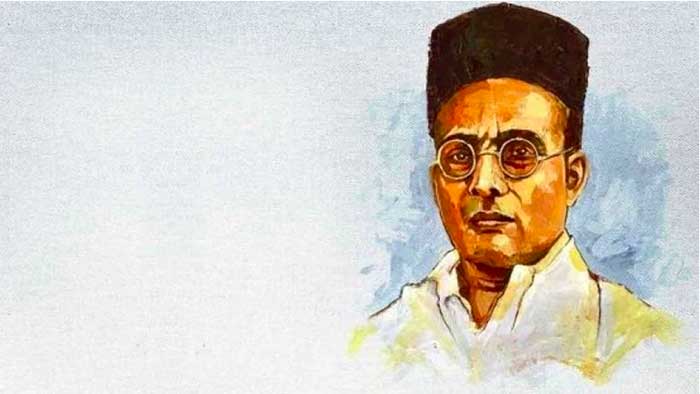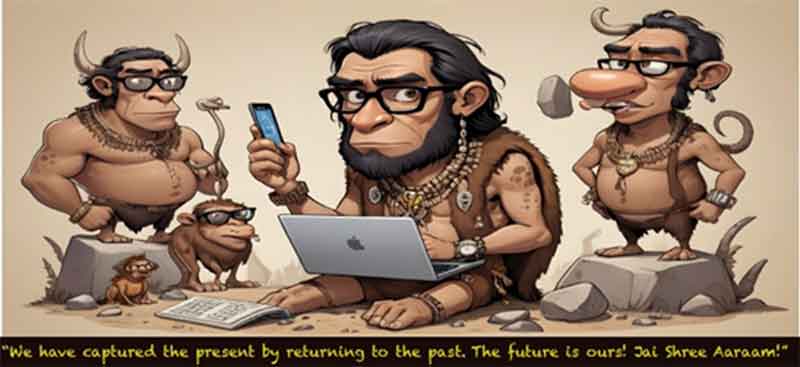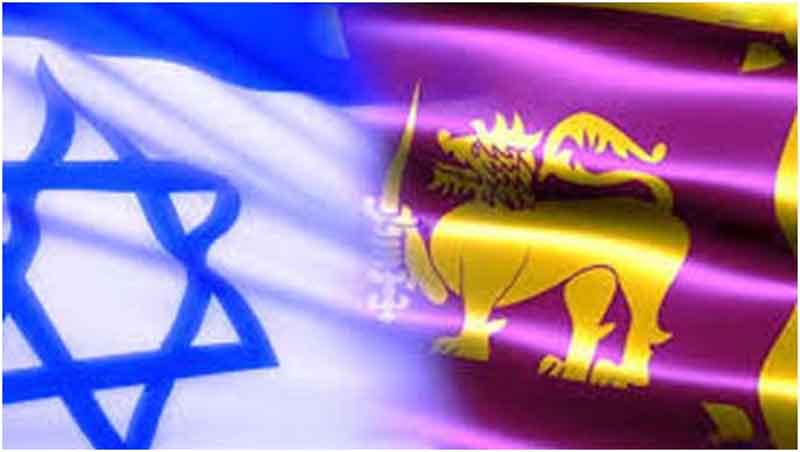
Saarang Narayan is a postgraduate researcher (doctoral candidate) at the School of History, University of Leeds. He holds Bachelors’ and Masters’ degrees in History from Delhi University and the University of Oxford respectively. His research interests centre around histories of Hindu Nationalism, development, globalisation, and post-colonial Indian history in general. Saarang has been working on hindu nationalism and its economic thought particularly since 2017. His doctoral research in particular explores the development of Swadeshist thought in twentieth century and its relationship with the politics of hindutva. Journalist Abhish K. Bose interviews Mr Narayan on the basis of his research.
Excerpts from the interview
Abhish K. Bose : In your thesis you postulates that by understanding the Swadeshi ( indegenous) strand of intellectual philosophy it is easier to decipher the origin of the hindu nationalist movement in India. Why is the Swadeshi strand in Indian philosophy that much cardinal in understanding the Hindu nationalism project? Where lies the exact root of Swadeshi thinking and it’s umbilical ties with hindu nationalism?
Saarang Narayan : can perhaps best answer this question by briefly talking about how and why I became interested in Swadeshi in the first place. In various discussions about Hindutva and Hindu Nationalism that I had with my professors and fellow students during my undergrad, a couple of ideas always stuck out. Firstly, that Hindutva doesn’t have any model of economics; it simply borrows ideas from here and there. This, as I learned later, is actually a more general characteristic of Hindutva – there is very little originality to their thought. And secondly, I was somewhat surprised to learn that in the 1990s, economics became a bone of contention in the ideologically monolithic Sangh Parivar, with one faction arguing for Globalisation, and the other for Swadeshi economics. This ignited a curiosity in my mind because I had always associated ’Swadeshi’ with Gandhi, and also the Congress in the context of the Bengal partition in 1905. I began to wonder what it was about Swadeshi that made it appealing to Hindu Nationalists? Why did the economic programme of Gandhi and his followers become the rallying cry for the RSS? Some initial answers to this questions can be found in the scholarly work on the 1905 Swadeshi movement in Bengal which had many incisive insights about the Hindu Nationalist (or communal, if one were to use a more old-fashioned term) inclinations within Bengali Swadeshi thought. Even though some of the prominent figures in the Bengal Swadeshi movement may not have intended it, the ways in which they defined what Swadeshism meant was largely rooted in upper caste Hindu notions of the Indian nation and its history. Many of the ideas about Hinduism and India’s past that underpinned ‘communal’ politics found place in the Swadeshist ethic that the Bengal movement championed. For example, if you look at how leaders like Aurobindo Ghose and Bipin Chandra Pal thought about India’s past, you will find a lot of parallels with the way the RSS later imagined India’s history. All of this is, of course, born out of the colonial-orientalist view that India’s history before the British can be divided into Hindu and Muslim periods, which meant that religion was at the centre-stage of defining the contours of the Indian ‘nation’. Such a view of history implied that religion defined the life of those living in South Asia, from everyday practices and beliefs to the laws and ideas governing the institutions. And of course, as we all know, a second assumption of this perspective of history was that the ‘Hindu’ period was seen as more ‘authentically’ Indian, since the ‘Muslim’ period was seen as being born out of ‘invasions’ by ‘outside’ forces, who ‘imposed’ their religious views and institutions upon the ‘real’ Indian people. Leaders in the Bengal swadeshi movement used this perspective as a blueprint in opposing the British and mapped their anti-colonialism onto this framework of defining the authentic Indian self as being Hindu. I think this socio-cultural perspective of history is one of the central nodes that ties Swadeshi with Hindu Nationalism. There are other common elements – the emphasis on physical strength and ‘manliness’, the defense of caste, the cautioned curiosity about modern life, etc. – that one finds in the larger bid for Swadeshi. It is this broadly conservative socio-cultural ethic that links Swadeshi politics with Hindutva. And I am not saying that the Bengali Swadeshists (or their contemporaries in the Congress like Lajpat Rai, B.G. Tilak, etc.) had the same goals as the RSS and Sangh Parivar that came later. But it is important to point out that they shared a lot of ideas about the nation, about the individual, and about socio-cultural institutions. So perhaps the legacy of anti-colonialism is intrinsically tied to the historical trajectory of Hindutva, at least intellectually.
Abhish K. Bose : It is much discussed about the beginning of the right wing hindu nationalist movement in India, that is in the erstwhile United Provinces Cow protection movement, and that strand of thinking aggravated after the formation of the RSS in the 1925, when that stream of ideological fountain was consolidated with its manifested presence. So how is the hindu nationalism owing to Swadeshi according to your research?
Saarang Narayan : I think this question points to a really important lacuna in the way we think about Hindutva in the liberal-public sphere. A lot of the time when we think or hear or talk about Hindutva or the RSS or the BJP, we immediately associate it with violence, riots, hate, and anger. I don’t think this is necessarily wrong – in fact, this is the primary reason why Hindutva ought to be opposed. But this line of thought cannot offer the best explanation of how and why Hindutva has gained popularity. The violence associated with communal riots, cow protection, or even the violent demonstrations during festivals and ‘pride rallies’ that we saw recently, is at the heart of Hindutva. But this isn’t the only avenue for Hindutva groups to gain newer audiences. In my opinion and experience, Hindutva grafts itself onto the seemingly mundane practices and beliefs. Simple acts of practicing one’s religion or the myths associated with caste groups that are often part of the everyday self-identity of Hindus, and have usually very little to do with politics (in the general sense of the term) become fertile grounds for RSS to draw linkages with their perspective of the nation and its people. Now this is a very broad and deeper discussion, but in my view, Swadeshi figures into this larger framework of how Hindutva operates. The socio-cultural perspective of Swadeshist thought, as we talked about a moment ago, is deeply embedded in Hindu modes of thinking. And these modes of thinking about the past, about the self and society, about modern life, etc. are celebratory of Brahmanical Hindu philosophies and traditions. For instance, many Swadeshists (including Gandhians) justify their economic and political views by citing Hindu religious texts like the Dharmashastras, Puranas, and Vedas. Or they argue that Swadeshist economics is the best economic model for India because it supports the caste organisation of society, which keeps India’s cultural beliefs intact. This is to say that the threat posed to caste hierarchies by cosmopolitanism or more secular and progressive principles can be mitigated in a Swadeshi model of economy. So an individual need not feel alienated from their socio-cultural roots if the Indian government would create an economy that was ‘Swadeshi’ in character. To put it in simpler terms, the message of Swadeshi is ‘we are good the way we are or were, and our future needs to be based on principles that keep our way of life unchanged.’ This promise of celebrating one’s socio-cultural identity (be it based on caste, or gender, or religion) in the face of dazzling and alienating modern capitalistic life can appear rather harmless, but it brings with it a violent defence of the hierarchy and exclusionary practices that are part and parcel of Hinduism. This is a violence of a different kind than the direct kind of violence associated with lynchings and pogroms. This is a violence that can permeate our everyday life and the very foundation of our ideas about who we were, who we are, and who we wish to be. So by looking at Swadeshi, we can perhaps understand why someone would be motivated to participate in violent acts against others. Swadeshi doesn’t necessarily call for direct violence against an ‘Other’, but it certainly shapes one’s ‘Self’ in a manner that can inspire that violence against others.
Abhish K. Bose : It is said that RSS owes its original to the European nationalism and the fascist regimes of Europe. Do you contests this claim?
Saarang Narayan : I don’t contest that claim at all. In fact I think the RSS is amongst the only ones that will contest that claim. Though some scholars are of the opinion that European fascism cannot be used as a paradigm to make sense of an Indian phenomenon, or that by comparing the two we are somehow downplaying the horrors of the holocaust. But I feel that there are two reasons why fascism is a suitable paradigm to understand Hindutva. Firstly, there is plenty of archival evidence that Hindu Nationalists had organisational links with the Nazis in Germany and fascists in Italy, and so on. Ben Zachariah’s work in particular comes to mind about this link. Also, some early texts of Sangh ideologues support the fascist movements in Europe. The Sangh has been proactive in revising this position in the years after the Second World War. But I certainly think that they cannot ever wipe out these linkages from their history. Especially because to this day, their own organisations are styled in ways reminiscent of European fascists. This is the second reason why I think we can call them fascists. The way they dress and the way a shakha is organised is very similar to how, for instance, the Nazis would drill children. Furthermore, the metaphors and systems of knowledge through which the early ideologues of the RSS expressed their ideas are strikingly close to European fascists, and even American white supremacists: eugenics, race theory, a skewed sense of social Darwinism flow freely from the cup of both Savarkar and Golwalkar, for example. Now I agree that there are differences between the RSS and the Nazis for instance; If you look at the BJP, for example, it is a parliamentary party and even though it has re-shaped the character of liberal-democratic institutions in India, it still operates like an electoral party. This can lead one to think that “well, they fight elections and haven’t abolished the constitution (yet), so maybe they’re not like Hitler or Mussolini who were more open about their dictatorial designs.” (Perhaps this can also invite a discussion in our minds about whether India’s democratic institutions were ever truly democratic or not). But when I call the RSS and BJP fascists, it is not to say that they were a one-to-one copy of the Nazis. Hindutva ideologues are perhaps a unique brand of fascism in the sense that they are extremely malleable and dynamic. They are willing to shed older garbs for newer ones as and when needed. So they may have opposed Gandhi and Gandhian politics in the colonial period, but in the post-colonial period, for example, many RSS figures claim that they are Gandhians or that Gandhi was their intellectual predecessor. Similarly, they have been trying to claim the legacy of Ambedkar and Bhagat Singh for themselves as well. So they have no qualms in calling themselves Gandhian or Ambedkarite if the situation calls for it. But they twist these figures to fit the Sangh’s ultimate agenda of building the Hindu Rashtra. This exercise is a bit easier with Gandhi than with Ambedkar or Bhagat Singh, but I think the willingness of the Sangh to change its shape to adapt to the context they are in is a unique feature of their fascist character. They are a bit like Fevi-kwik or super-glue, y’know? Remarkably quick and diverse in terms of just how many linkages it can make, yet retain its distinctive plastic-like appearance, and lest we forget, harmful for human beings!
Abhish K. Bose : The Swadeshi is the economic system which promotes the use of nation made goods and food. This kind of economics also comes up with a certain world view and a certain kind of perspective on the history of a nation. The nutshell of your thesis is that the Swadeshi is the seed that grew up into the giant tree that is hindu nationalism. Could you explain how the seed grew into the tree called hindu nationalism?
Saarang Narayan: That is a very difficult question to answer because the answer is practically my whole PhD thesis! But I’ll try and be brief!
When we refer to Swadeshi, we immediately think about the boycott of British goods, especially mill-made imported cloth, as well as the promotion of Indian alternatives, most prominently homespun Khadi. One may also add to this list the promotion of Ayurveda or natural products as opposed to processed foods, etc. And most accounts of the Swadeshi movement in the colonial period also remind us that Swadeshi entailed the founding of alternative institutions by middle-class Indian, for example new banks, new businesses, schools, colleges, and so on.
But swadeshi also means other things that don’t necessarily lie within the domain of the political economy. What I mean is that Swadeshi is not just about autarkic economics or ethical consumption or indigenous alternatives to ‘Western’ institutions. The Swadeshi call for “self-sufficiency” is two fold: the “sufficiency” bit is best embodied by the political economy side of things, but it is the “self” part that is more revealing of the nature of Swadeshist thought, in my opinion.
So when one actually tries to see how advocates of Swadeshi thought about their “self”, one comes across overtly Hindu themes. This is to say that the Swadeshi “self” is imagined as a Hindu “self”. It is this imagination of the self as “Hindu” that makes Swadeshi coterminous with Hindu Nationalism, at least intellectually. In some ways it is only logical that Hindutva groups tout Swadeshi, because Swadeshism has always tried to forge a Hindu identity for the nation. This identity can be forged by propagating a certain view of the past, where Islamic rulers are seen as ‘violent invaders’ who suppressed the ‘authentic’ social formations of the Hindus. Or this identity can be seen when some people try to say that Ayurveda is as effective as modern medicine. A lot of Swadeshist thought buys into these arguments, and so it is only logical to then further investigate how Swadeshi came to be adopted by the RSS as its economic programme.
Abhish K. Bose : Could you explain your first hand experience as a researcher on hindutva in the hindi heartlands. Why is it that a large segment of the population are lured by the divisive politics of the BJP?
Saarang Narayan : The research for my PhD was primarily archival, and due to the pandemic and the lockdowns, I did not get much of a chance to do much field work. But I think some of the themes that I work with while looking at the trajectory of Swadeshist thought can help arrive at a better understanding of why the BJP’s politics of division and hate is popular.
As I mentioned earlier, a lot of Swadeshist thought is preoccupied with defining the ‘self’. And if you read what Swadeshist ideologues (both within and outside the Sangh Parivar) are writing, there is an implicit sense of anxiety, shame, and a general sense of inferiority about “who we are”. This kind of anxious self-image I think comes from two things. Firstly, it comes from the colonial encounter and the orientalist narrative that accompanied it. Colonial orientalist thought created this binary of a spiritual east and materialistic west, and many Indians accepted this binary. And part of this oriental narrative was the idea that India had once been a very prosperous nation – this had little to no empirical evidence, but perhaps the vestiges of a memory of pre-colonial South Asia being a centre for trade and cultural exchange may have played into this. But this prosperity was equated with the supposedly characteristic “spirituality” of the East. And so some folks started to argue that India was prosperous because people were spiritually minded and religiously more “advanced” than Europe or America. They internalised this false binary assumed that their religion was the source of their strength. And you’ll find this strand of thinking being extremely rampant across the board when it comes to anti-colonial leaders. And for some, a critical part of this internalised orientalism was the notion that Islam, being an “outside” religion, was also a colonial force in South Asian history, and so they began to equate Islamic rulers with “foreign” or “colonial” rule. And so the idea came to be that Hindus are the somehow the “real” Indians and non-South Asian religious groups are either “outsiders” or just Hindu brethren who had been led astray by force. This cemented a memory of pre-Islamic past as something of an undisturbed golden age which needed to be revived if Indians are to once again prosper and decolonise themselves. There is little to no merit in any of this argument, of course, but this somehow stuck in popular memory through idioms like ‘Bharat to sone ki chidiya hua karta tha’ [India used to be a golden bird] or even the concept that Hinduism is some sort of Sanatan Dharma or eternal set of laws that has remained unchanged for millennia. So all that was Hindu came to be seen as a source of success for the future, since it supposedly made India a prosperous nation in the past.
Now fast-forward to the 1980s and 1990s, and we arrive at the second phenomenon that really accentuated this Hindu-ised idea of the Indian ‘self’. When we see India’s markets being opened up to international products, there seems to be a return of this anxiety and sense of inferiority. It’s not as if this kind of self-image went away before this time, but coupled with charges of corruption and red tape being levelled against the state and the encounter with cosmopolitanism and dazzling consumerist liberalism of the free market, these feelings of insecurity about “who we are” became more and more acute. So for example, when Japanese or German electronics like TVs and Radio sets began to become widely available, or when computers and digital technologies began to come into India in the late 1980s and early 1990s, people began to feel that the products that were “made in India” were inferior. Or when advertisements for new products used sexualised imagery or depicted women as more than just a traditional house-wife, many people began to fear that this new free-market consumerist lifestyle will mean the end of traditional patterns of life and relationships. This kind of fear is nothing new and I think there is a grain of truth in it. Now although they had been slowly gaining popularity from the mid-1970s, the BJP and Sangh Parivar capitalised on these anxieties that flared up in light of the growing consumerism and marketisation. But interestingly enough, they didn’t reject neoliberalism or capitalism or the free market. I think this is an important point that sometimes gets obfuscated in our memory of the anti-globalisation rhetoric of the RSS. But anyway, the BJP and RSS basically came around and said that they would help lead the way towards the free-market in a globalised world without changing the social and cultural tenets of India. In some ways I think this kind of a message of economic change with socio-cultural protection appealed to a large and aspiring population that also inherited a memory of colonial exploitation along with that older notion that Hinduism and its cultural practices were somehow a source of strength. The Sangh’s message to an anxious aspiring middle class was that ‘you are great as you are, and you don’t need to change your social or cultural identity in order to move up in the world’, and this fundamentally conservative message was delivered alongside the idea that there were certain elements that were holding India back from moving ahead in the globalised world. On the one hand you had an anglicised elite who were characterised as being self-interested and corrupt (which I think was also true to some extent). And on the other hand was the much more dangerous and vitriolic Islamophobic narrative that Muslims were uninterested in the nation, since their religious beliefs were somehow foreign. Both these groups were seen as hindrances to reviving India’s glorious past and actualising the Hindu self’s true potential.
This line of thinking along with other socio-political factors in the late twentieth century created somewhat of a perfect storm which ultimately culminated in the Ramjanmabhoomi Movement. Everything since has seemed like a right-ward shift towards Hindutva. Even though their politics is founded upon hate, I think it is important to understand some of the other things that Hindu Nationalists talk about in order to fully understand why they gain popularity. I don’t think their politics would not have gone too far if it was simply about violence and hatred. Their message seeks to soothe certain anxieties that are shared by a huge number of aspiring Indians. This message may be dangerous and founded upon shaky logic, but unfortunately it seems to have resonated with enough people!
Abhish K. Bose is a journalist

















































